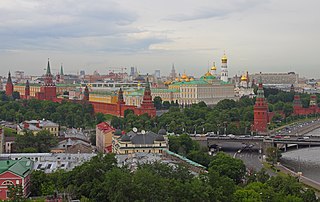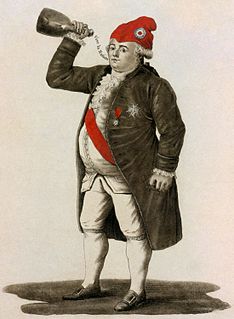
The Ottoman Empire, known to the Ottomans as the Empire of Rûm/Rome, and known in Western Europe as the Turkish Empire or simply Turkey, was a state and caliphate that controlled much of Southeast Europe, Western Asia and North Africa between the 14th and early 20th centuries. It was founded at the end of the 13th century in northwestern Anatolia in the town of Söğüt by the Oghuz Turkish tribal leader Osman I. Although initially the dynasty was of Turkic origin, it was Persianised in terms of language, culture, literature and habits. After 1354, the Ottomans crossed into Europe, and with the conquest of the Balkans, the Ottoman beylik was transformed into a transcontinental empire. The Ottomans ended the Byzantine Empire with the 1453 conquest of Constantinople by Mehmed the Conqueror.

Edward III was king of England and Lord of Ireland from January 1327 until his death; he is noted for his military success and for restoring royal authority after the disastrous and unorthodox reign of his father, Edward II. Edward III transformed the Kingdom of England into one of the most formidable military powers in Europe. His long reign of 50 years was the second-longest in medieval England and saw vital developments in legislation and government, in particular the evolution of the English Parliament, as well as the ravages of the Black Death.

A helmet is a form of protective gear worn to protect the head. More specifically, a helmet complements the skull in protecting the human brain. Ceremonial or symbolic helmets without protective function are sometimes worn. Soldiers wear helmets, often made from lightweight plastic materials.

Mamluk is an Arabic designation for slaves. The term is most commonly used to refer to non-muslim slave soldiers and Muslim rulers of slave origin.
In medieval Europe, a march or mark was, in broad terms, any kind of borderland, as opposed to a notional "heartland". More specifically, a march was a border between realms, and/or a neutral/buffer zone under joint control of two states, in which different laws might apply. In both of these senses, marches served a political purpose, such as providing warning of military incursions, or regulating cross-border trade, or both.
Foreign relations or foreign affairs refers to the management of relationships and dealings between countries. Any results of foreign policy dealings and decisions can be considered foreign relations.

The Kingdom of France in the Middle Ages was marked by the fragmentation of the Carolingian Empire and West Francia (843–987); the expansion of royal control by the House of Capet (987–1328), including their struggles with the virtually independent principalities that had developed following the Viking invasions and through the piecemeal dismantling of the Carolingian Empire and the creation and extension of administrative/state control in the 13th century; and the rise of the House of Valois (1328–1589), including the protracted dynastic crisis of the Hundred Years' War with the Kingdom of England (1337–1453) compounded by the catastrophic Black Death epidemic (1348), which laid the seeds for a more centralized and expanded state in the early modern period and the creation of a sense of French identity.

The Moscow Kremlin, or simply the Kremlin, is a fortified complex in the center of Moscow, overlooking the Moskva River to the south, Saint Basil's Cathedral and Red Square to the east, and the Alexander Garden to the west. It is the best known of the kremlins and includes five palaces, four cathedrals, and the enclosing Kremlin Wall with Kremlin towers. In addition, within this complex is the Grand Kremlin Palace that was formerly the Tsar's Moscow residence. The complex now serves as the official residence of the President of the Russian Federation and as a museum with 2,746,405 visitors in 2017.

The Kingdom of England was a sovereign state on the island of Great Britain from 927, when it emerged from various Anglo-Saxon kingdoms until 1707, when it united with Scotland to form the Kingdom of Great Britain.

A tournament, or tourney, was a chivalrous competition or mock fight in the Middle Ages and Renaissance. It is one type of hastilude.

The cravat is a neckband, the forerunner of the modern tailored necktie and bow tie, originating from a style worn by members of the seventeenth-century military unit known as the Croats.

The Emperor of Ethiopia was the hereditary ruler of the Ethiopian Empire, until the abolition of the monarchy in 1975. The Emperor was the head of state and head of government, with ultimate executive, judicial and legislative power in that country. A National Geographic article called imperial Ethiopia "nominally a constitutional monarchy; in fact [it was] a benevolent autocracy".

Kelso Abbey is a ruined Scottish abbey in Kelso, Scotland. It was founded in the 12th century by a community of Tironensian monks first brought to Scotland in the reign of Alexander I. It occupies ground overlooking the confluence of the Tweed and Teviot waters, the site of what was once the Royal Burgh of Roxburgh and the intended southern centre for the developing Scottish kingdom at that time. Kelso thus became the seat of a pre-eminently powerful abbacy in the heart of the Scottish Borders.
The early modern period of modern history follows the late Middle Ages of the post-classical era. Although the chronological limits of the period are open to debate, the timeframe spans the period after the late portion of the post-classical age, known as the Middle Ages, through the beginning of the Age of Revolutions and is variously demarcated by historians as beginning with the Fall of Constantinople in 1453, the Renaissance period in Europe, the Muslim conquests in the Indian subcontinent, and the Age of Discovery and ending around the French Revolution in 1789.

Culottes are an item of clothing worn on the lower half of the body. The term can refer to split skirts, historical men's breeches, or women's under-pants; this is an example of fashion-industry words taken from designs across history, languages and cultures, then being used to describe different garments, often creating confusion among historians and readers. The French word culotte is panties, pants, knickers, trousers, shorts, or (historically) breeches; derived from the French word culot, meaning the lower half of a thing, the lower garment in this case.

Panniers or side hoops are women's undergarments worn in the 17th and 18th centuries to extend the width of the skirts at the side while leaving the front and back relatively flat. This provided a panel where woven patterns, elaborate decorations and rich embroidery could be displayed and fully appreciated.

Absolute monarchy in France slowly emerged in the 16th century and became firmly established during the 17th century. Absolute monarchy is a variation of the governmental form of monarchy in which the monarch holds supreme authority and where that authority is not restricted by any written laws, legislature, or customs. In France, Louis XIV was the most famous exemplar of absolute monarchy, with his court central to French political and cultural life during his reign.

Brioude is a commune in the Haute-Loire department in the Auvergne region in south-central France. It lies on the banks of the River Allier, a tributary of the Loire.

The history of the city of Bangkok, in Thailand, dates at least to the early–15th century, when it was under the rule of Ayutthaya. Due to its strategic location near the mouth of the Chao Phraya River, the town gradually increased in importance, and after the fall of Ayutthaya King Taksin established his new capital of Thonburi there, on the river's west bank. King Phutthayotfa Chulalok, who succeeded Taksin, moved the capital to the eastern bank in 1782, to which the city dates its foundation under its current Thai name, "Krung Thep Maha Nakhon". Bangkok has since undergone tremendous changes, growing rapidly, especially in the second half of the 20th century, to become the primate city of Thailand. It was the centre of Siam's modernization in the late–19th century, subjected to Allied bombing during the Second World War, and has long been the modern nation's central political stage, with numerous uprisings and coups d'état having taken place on its streets throughout the years.
The French conquest of Senegal started from 1659 with the establishment of Saint-Louis, Senegal, followed by the French capture of the island of Gorée from the Dutch in 1677, but would only become a full-scale campaign in the 19th century.